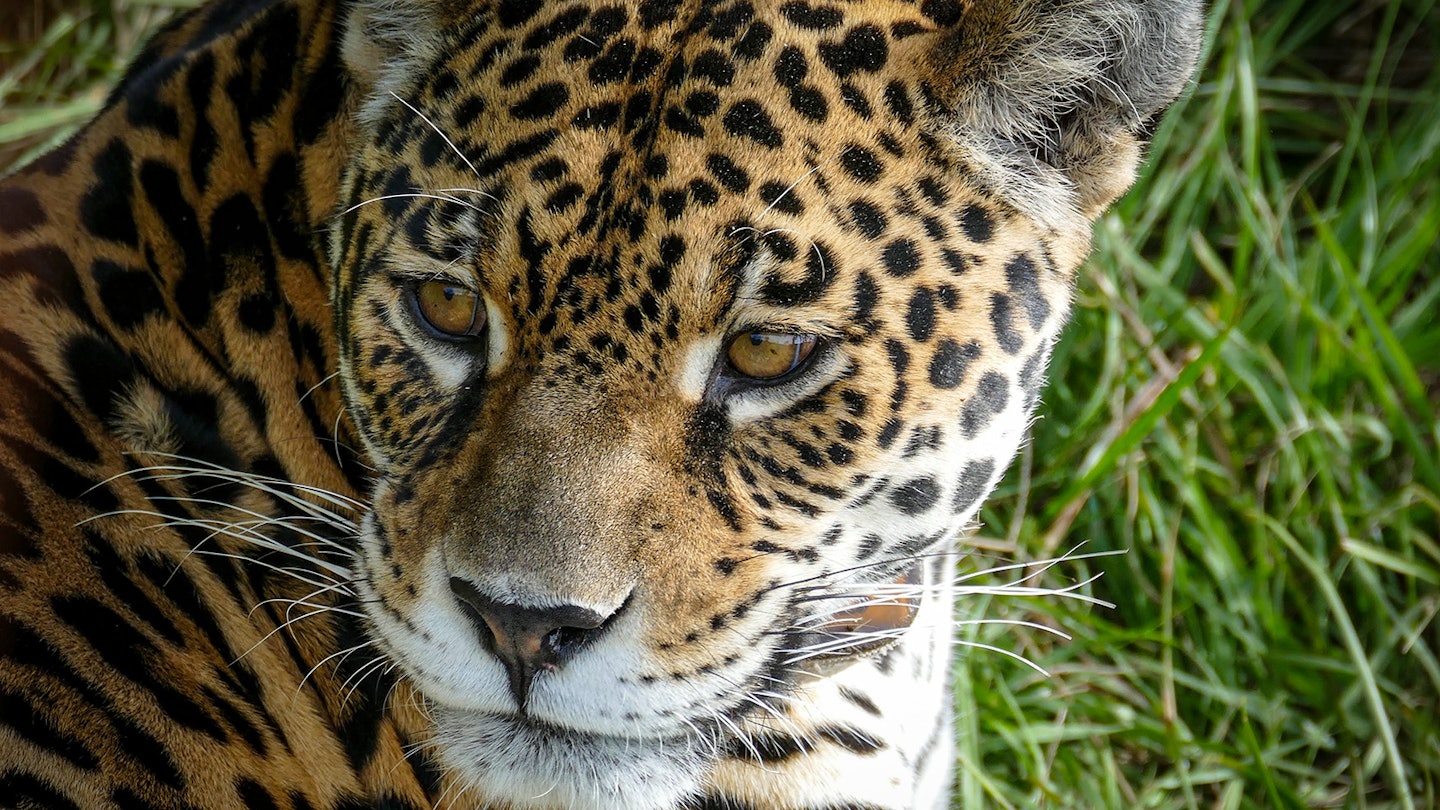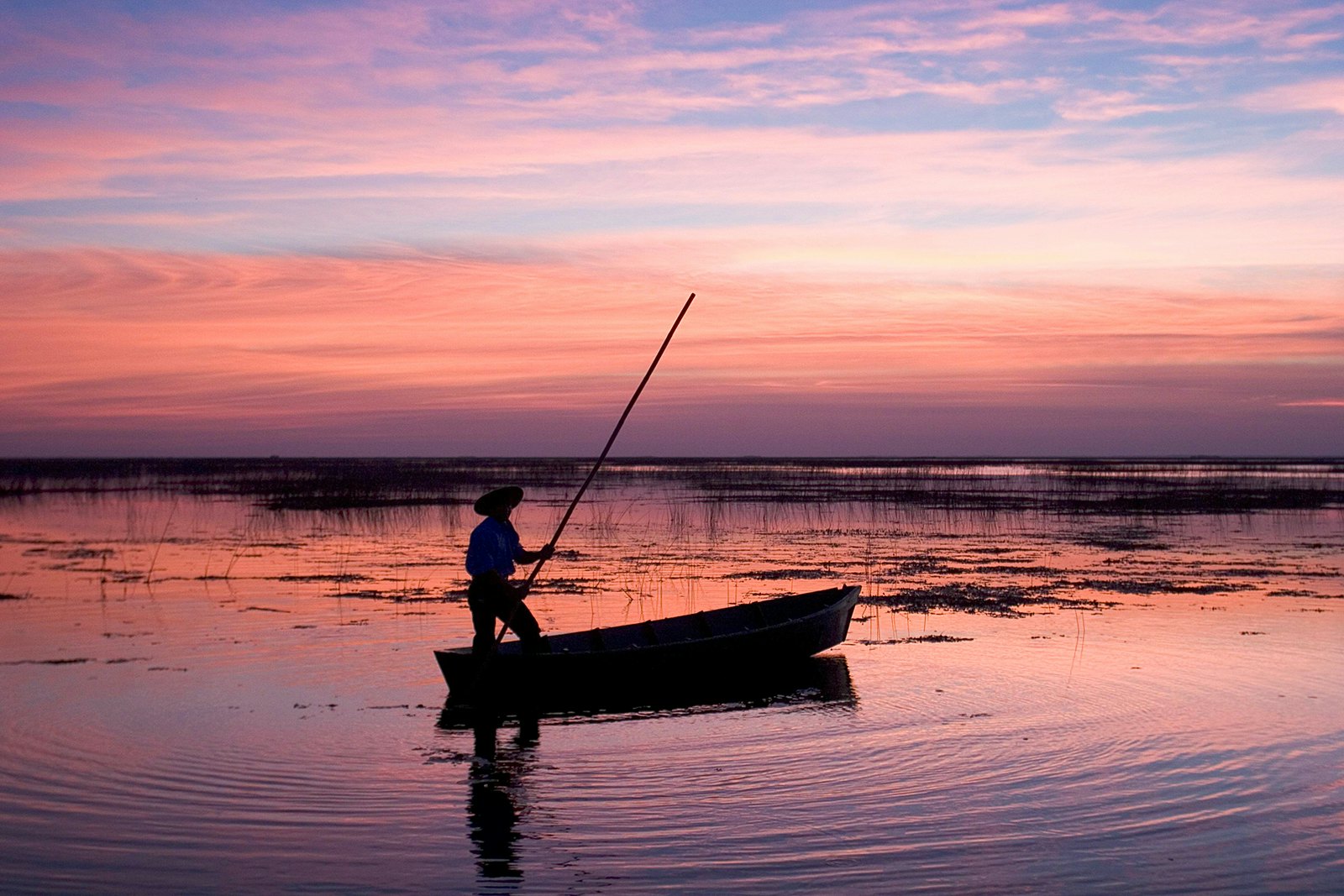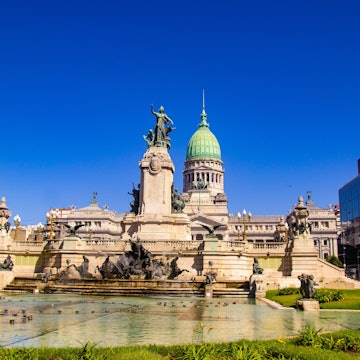
Iberá National Park: Northeast Argentina's wetland wonderland
Aug 23, 2019 • 5 min read

Knuckles grip the gunwales as visitors glide through the pristine wetlands on a horse-drawn canoe. Hooves splashing, spilling laughter as they part a tipsy path through the waterlilies. The local guide from Concepción delights in everybody’s soaking.

Soon enough the pace slows, but it’s moments like these that reveal adventuring to these remote lands to be pure joy. It’s also an original way to get immersed in the rich culture and wildlife of Northeast Argentina while paying homage to the unique cowboy heritage of the wetlands. Created in 2018, Iberá National Park is poised to become one of Argentina's greatest attractions. These restored wetlands feature some of the country’s best wildlife watching and criollo traditions from its unique Spanish and Guaraní heritage. While Northeast Argentina is best known for Iguazú Falls, the largest waterfall system on the planet, and the haunting ruins of Jesuit missions like San Ignacio Miní, travelers willing to explore more will be rewarded.

Safari, South American style
Welcome to full-immersion nature. This watery world is home to snapping caiman, 350 bird species and elegant marsh deer wading the shallows. Ply the waters of Laguna Iberá with local guides, spying innumerable species against a backdrop of flaming sunsets. On land, it’s not hard to come upon groups of rheas, howler monkeys and capybara – the world’s largest rodent and a gentle herbivore. Highly-endangered species like the jaguar, green-tipped macaw and giant river otter are also coming back, thanks to a groundbreaking rewilding initiative. Argentina was on the brink of losing this important ecosystem after decades of threats ranging from hunting and poaching to dams and mono-crops. In the late 1990s, conservationists Douglas and Kristine Tompkins stepped in, bought unprotected land and began a large-scale restoration of grasslands. Their organization, the Conservation Land Trust (CLT), has gone on to reintroduce many locally extinct or endangered native species, like the giant anteater, collared peccary, bare-faced currosaw and pampas deer.

Restoration is still a work in progress. Just as the return of the wolf to Yellowstone helped regulate populations of prey and native flora, bringing back top predators to Iberá, such as the jaguar and giant river otter, is proving essential to restoring the ecological balance. It’s also starting to make Iberá a top South American wildlife-watching destination, like the Pantanal in nearby Brazil. Many hope that responsible tourism can help encourage the preservation of this unique ecosystem and give a boost to the rural economy.
Portals of adventure
With so many ways to get your thrills, the only question is where to start. Iberá National Park and the adjoining provincial park make up one of the largest protected areas in Argentina, so careful planning is important. The entrances form a ring around the wetlands, each one at several hours distance from the next. Visitors should either have their own vehicle or contract the services of a local tour operator.
In the park’s southeast, Portal Laguna Iberá has excellent camping next to the docks and a variety of lodging options, from guest houses to estancias, in the nearby town of Carlos Pellegrini. Excellent boat tours leave from the public docks. Nearby, Ríncon del Socorro is the primary center for rewilding, with abundant wildlife onsite in addition to midrange to upscale estancia lodgings and activities. It’s a privileged spot for wildlife watching, and with luck you might glimpse the elusive maned wolf.

To the west, Portal Carambola gives visitors a way to get hands-on in the wetlands and glimpse a disappearing lifestyle. Kayaking, horse-drawn canoe tours and aquatic horse-riding trips are offered by community guides. These activities are roughly based on a traditional criollo lifestyle, when ranchers raised cattle in these flooded pastures. A highlight is taking an overnight aquatic riding tour, where sturdy horses wade through the marshland and swim alongside their riders in deeper spots. Make your base in the colonial-style village of Concepción.
To the north, Portal Cambyreta features good camping facilities and short trails. Beyond the quality time you can spend here with capybara and caimans, you can spot the first flock of green-tipped macaws to return to Argentina. Rewilding fanatics can splurge with a journey to the heart of the wetlands.
The isolated island of San Alonso is home to the jaguar breeding center and the giant otter reintroduction pen. While these sites are not open to visitation, you can still enjoy a comfortable estancia stay with guided wildlife walks and boating. Privately run by CLT, it’s only accessible by charter flight or charter boat.

Make it happen
Visits can be made year-round, though summer (December through February) is hot. Mild temperatures make spring and autumn ideal. Cool and dry, August is favorable for wildlife watching as water sources have somewhat dried up. September and October are prime months to visit Iguazú Falls without the crowds. For more information about the different wetland portals and available activities and services, check out the park's website or the region's municipal tourism page.
Lodging
Ríncon del Socorro This gorgeous estancia hotel with onsite restaurant, organic garden and swimming pool is a great base for wildlife watching.
Estancia San Alonso On a private island in the wetlands, this exclusive estancia home has ten rooms and can be reached by boat or charter plane. Activities include kayaking, horse riding and hiking.
Alondra Hotel Boutique A stylish boutique hotel in the middle of the colonial village of Concepción, with onsite dining.
Iberá Municipal Campground (03773-15432388; AR$200 per person) At the entrance to the national park near Carlos Pellegrini, this deluxe campground has picnic shelters, BBQ grills and showers, next to the boat rides.

Guided Tours
Iberá Guides Association (guiasIberápora@gmail.com; +54 937-8247-7339) Based in Concepción, this group of local guides offers canoe trips led by horses, boating and kayaking.
Salvaje Iberá (postayatay@gmail.com; +54 937-8252-6317) This guide service specializes in 2-3 day kayak trips (from US$95).
Swimming with Horses (Iberárugua@gmail.com, +54 937-8251-5129) Guide Omar Rojas offers aquatic horseriding tours of the wetlands. Overnight tours include lodging, transfers from Concepción, guides, food and insurance (from US$300).
Boat trips from Iberá Municipal Campground A great value, these two-hour boat rides prowl the wetlands in search of wildlife (AR$500 per person). Perfect for photography.
Experiencia Corrientes (+56-3794501702; La Rioja 455) A tour operator in the city of Corrientes with all-inclusive tours of Iberá National Park including transfers, meals, lodging and English-speaking guides, with options for kayaking or boating.
Transportation
From Buenos Aires, you can fly to Resistencia or Corrientes and rent a vehicle to the Iberá Wetlands National Park. For those visiting Iguazú Falls, charter flights from Posadas to Ríncon del Soccoro or San Alonso are also available. A nightly bus goes from Buenos Aires to Mercedes, the closest city to Ríncon del Socorro and Carlos Pellegrini.















